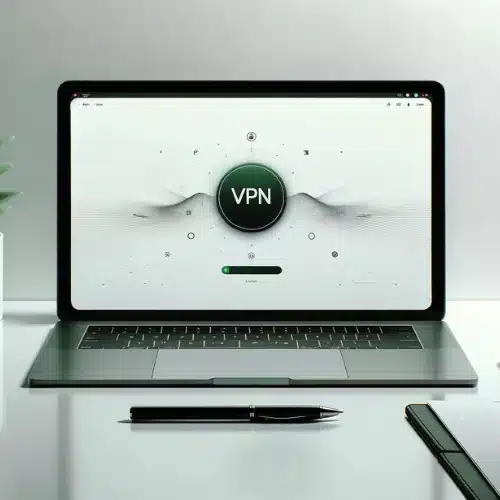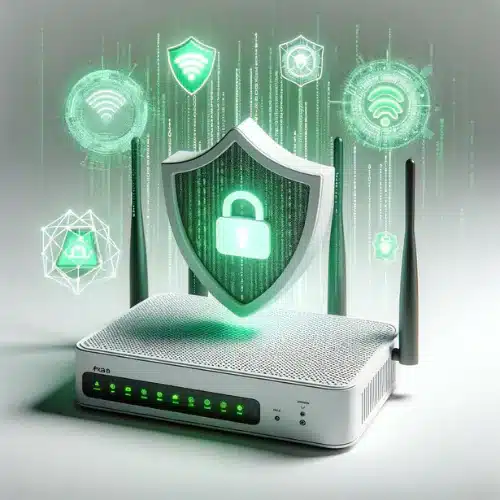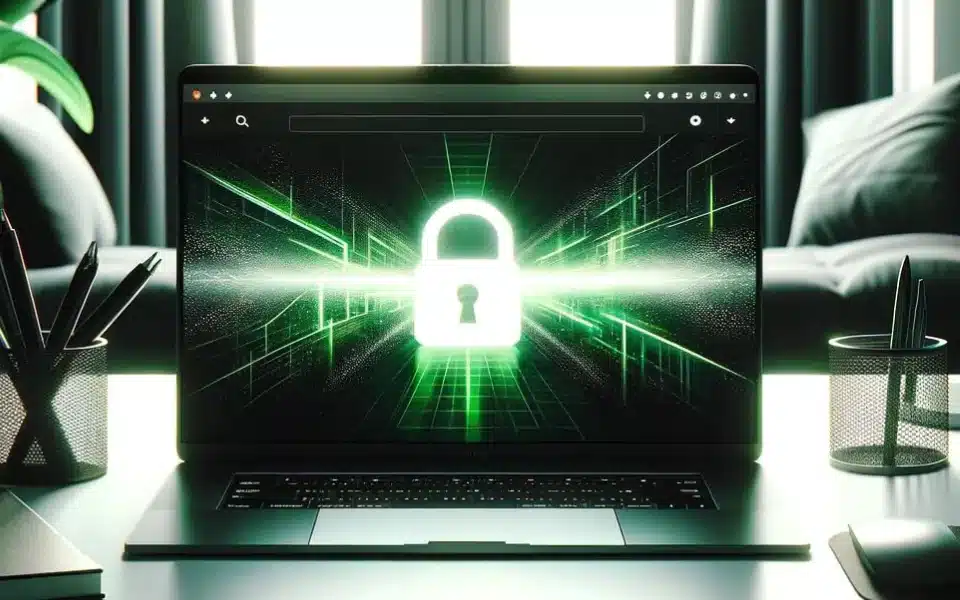Your privacy should be your top priority. As your virtual identity, your IP address can reveal more about you than you’d like. It’s crucial that you realize the risks linked to a public IP that range from tracking to potential interpretation of your digital footprints – a scenario no privacy-conscious person wants to contemplate. To guard your internet activity and maintain your digital privacy, it’s crucial that you understand how to hide your IP address.
In this article, we will give you the results of our research about the best safe methods you can use to conceal and hide your IP address.
Table of Contents
- Why Should You Consider Hiding Your IP Address?
- The Hidden Risks of Public IP Addresses
- How To Hide Your IP Address?
- 1. Hiding Your IP Address With Proxies
- 2. Hiding Your IP Address With VPN
- 3. Using The Tor Browser To Hide Your IP Address
- 4. IP Bouncing
- 5. Changing Router Settings To Hide Your IP Address
- Choosing the Right Method for You
- Is Hiding Your IP Address Legal?
- Understanding the Impact of Hiding Your IP on Internet Speed
- Glossary of Terms: Decoding the Jargons of Online Privacy
- How Do I Download And Use The Tor Browser Safely?
Why Should You Consider Hiding Your IP Address?
Your IP address acts like a digital mailing address, broadcasting your approximate location and potentially allowing websites and third parties to piece together your online activities. Here are some compelling reasons why it’s worth considering hiding your IP address:
- Bypass Geo-Restrictions: Many streaming services and websites restrict content based on your geographic location. By masking your IP address, you can convincingly appear to be in a different country, gaining access to a wider range of online content.
- Maintain Privacy and Anonymity: Your IP address allows websites, advertisers, and your Internet Service Provider (ISP) to track your browsing habits. Hiding it reduces the amount of data they can collect, giving you more control over your online footprint.
- Avoid Targeted Advertising: Companies use your IP address to create a profile of your interests and display tailored ads. By hiding or changing your IP address, you can disrupt this profiling and potentially see less intrusive advertising.
- Prevent Price Discrimination: Some online retailers have been known to alter prices based on a user’s location. By masking your IP address, you can ensure you’re seeing the fairest prices possible.
- Thwarting Website Bans: If you’re inadvertently blocked from a website or service due to shared IP addresses (like at school or work), changing your IP address can resolve the issue.
Remember, your IP address isn’t a completely foolproof piece of data, but it does reveal more than you might expect. Keeping it masked increases your digital privacy and allows you greater control over your online experience.

The Hidden Risks of Public IP Addresses
Exposing your real IP address, while perfectly normal for internet activity, does come with a few inherent risks. Understanding these risks will help you decide if taking steps to hide your IP address is a priority for you:
- Location Tracking: One of the primary functions of an IP address is to reveal your general geographic location. While not pinpointing your exact address, your IP address can often narrow down your city, region, and even zip code. This information can be used for everything from harmless regional marketing to more intrusive tracking by online entities.
- Surveillance & Data Logging: Your Internet Service Provider (ISP) has direct access to your public IP address and can keep detailed logs of your browsing activity. Depending on your region and ISP, they may be under legal obligation to store or share this data. Hiding your IP adds a layer of obscurity to your browsing habits. You can read more here about digital censorship in places like China.
- Vulnerability to Cyber Attacks: Cybercriminals continuously scan the internet for open, public IP addresses that may have security vulnerabilities. Exposed IP addresses make you a more visible target for hacking attempts, such as DDoS (Distributed Denial of Service) attacks intended to overload and take down your network.
- Compromised Privacy During Online Activities: Even when engaging in activities like P2P (peer-to-peer) file sharing or certain types of online gaming, your real IP address might be visible to other participants. This leaves you susceptible to tracking or targeted disruptions by malicious individuals.
How To Hide Your IP Address?
There are several proven methods to hide/mask your IP address. Here’s a breakdown of the most common approaches, along with some considerations to help you decide which might be the right fit for you:
1. Hiding Your IP Address With Proxies
- How it Works: A proxy server acts as an intermediary between your device and the internet. When you connect through a proxy, your traffic is routed through its servers, and your real IP address is replaced with the proxy’s IP address. This hides your location and browsing activity from websites and trackers.
- Pros: Simple setup, some are free, can be useful for basic location masking. Paid proxies are the best fit.
- Cons: Many free proxies are unreliable and can sell your data. Free proxies often offer slower speeds and can be less secure than VPNs.
Related: What Are SSL Proxy Servers & SSL Unblockers?
About 30% of all internet users have used a proxy server.

2. Hiding Your IP Address With VPN
- How it Works: A VPN (Virtual Private Network) encrypts your internet traffic and routes it through a secure tunnel to a server in a location you choose. This hides your IP address and also protects your data from potential interception on public or unsecured networks.
- Pros: Highly secure, excellent for privacy and bypassing geo-restrictions. VPN services often offer user-friendly apps and a wide range of server locations.
- Cons: Reliable residential VPNs usually cost money (monthly or yearly subscription).
Related: The Best 5 Residential VPN Providers (Prices and Features)
3. Using The Tor Browser To Hide Your IP Address
- How it Works: The Tor browser bounces your connection across a volunteer-run network of servers worldwide. Your traffic is layered with encryption at each step, making it extremely difficult to track your origin IP address.
- Pros: Free to use, focuses heavily on anonymity and privacy.
- Cons: Tor can be very slow due to the multiple encryption layers and routing hops. It’s not ideal for everyday browsing or streaming.
4. IP Bouncing
- How it Works: “IP bouncing” usually involves a combination of techniques like switching between mobile data and Wi-Fi, using dynamic IP addresses, or utilizing proxies and VPNs in rotation. These rapid and frequent changes make it harder to track your activities back to a single IP address.
- Pros: Increases difficulty of tracking your digital footprint.
- Cons: This can be more cumbersome to implement than a single solution, and its effectiveness is not foolproof.
5. Changing Router Settings To Hide Your IP Address
- How it Works: Many modern routers allow you to automatically obtain a new IP address from your ISP by disconnecting and reconnecting, resetting, or configuring specific settings.
- Pros: Convenient for temporary changes with no extra software.
- Cons: This does not mask your IP for general browsing activity, and your ISP can still see your assigned IPs over time. It also offers limited privacy benefits.

Choosing the Right Method for You
The “best” method depends entirely on your needs:
- For everyday privacy and security: V6proxies residential VPN offers the best balance of strong protection, reliable speeds, and ease of use.
- For occasional content unblocking: A basic proxy will suffice.
- For maximum anonymity: Residential proxy solutions are the go-to, but be prepared for their cost.
Is Hiding Your IP Address Legal?
In the vast majority of countries, hiding your IP address is perfectly legal. Tools like VPNs and proxy servers, the main methods of obscuring your IP, are widely used for both legitimate privacy protection and to access content restricted to certain locations.
However, it’s essential to remember that illegal activities remain illegal, even when you hide your IP address. Using any of these tools to engage in activities such as piracy, copyright infringement, or cyberattacks is still against the law, and authorities can potentially trace these behaviors back to you even with a masked IP.
Understanding the Impact of Hiding Your IP on Internet Speed
It’s important to know that most methods of hiding your IP address can introduce some degree of slowdown to your internet connection. Here’s why:
- Routing and Distance: When using proxies or VPNs, your data takes a detour through an intermediary server before reaching its destination. The additional distance your traffic needs to travel can create an increase in latency (delay), thereby slowing down your overall experience.
- Encryption Overhead: Secure methods like VPNs and Tor add layers of encryption to protect your data. This process, while critical for security, introduces computational overhead that can slightly affect speed.
- Proxy server quality: Free or overcrowded proxy servers often have limited bandwidth, further contributing to potential congestion and slow speeds.
How to Minimize The Impact On Internet Speed?
- Choose Reputable VPNs: Look for a premium residential VPN service with excellent speed optimization and a wide network of fast servers. Many offer speed tests within their applications, allowing you to select the quickest location available.
- Select Nearby Servers: When using a VPN or proxy, servers physically closer to your location will often minimize additional latency.
- Strong Base Connection: It’s essential to start with the fastest possible internet connection from your ISP, as any masking method will be bottlenecked by your initial line speed.
Glossary of Terms: Decoding the Jargons of Online Privacy
- IP Address (Internet Protocol Address): A unique numerical identifier assigned to every device connected to the internet. Think of it like your digital mailing address.
- Proxy Server: An intermediary server that acts as a go-between for your device and the internet. It masks your real IP address with its own.
- VPN (Virtual Private Network): Creates an encrypted tunnel for your internet traffic, hiding your IP address and protecting your data from snooping.
- Tor (The Onion Router): A specialized browser that anonymizes your web traffic by routing it through a complex network of volunteer-operated servers.
- Encryption: The process of scrambling data to make it unreadable to anyone without the decryption key. Essential for protecting data in transit.
- ISP (Internet Service Provider): The company that provides you with internet access. They can potentially see and log your browsing activity.
- Geo-Restriction: The practice of limiting access to online content based on a user’s geographic location.
- Targeted Advertising: Using your browsing data and profile to serve you advertisements that marketers believe will be more relevant to your interests.
- DDoS Attack (Distributed Denial of Service Attack): An attempt to overwhelm a website or network with traffic from multiple sources to take it offline.
How Do I Download And Use The Tor Browser Safely?
To Download Tor safely:
- The ONLY Source: Always download Tor Browser directly from the official Tor Project website: https://www.torproject.org/download/. This ensures you’re getting a legitimate, untampered version.
- Verification (Optional, but recommended): For greater security, you can verify the download against the file’s cryptographic signature. The Tor Project site provides instructions on how to do this.
To install Tor:
Installation will vary slightly depending on your operating system (Windows, macOS, Linux). The Tor Project website has detailed instructions. Generally, the process is similar to installing any other software.
Using Tor Browser:
- Connect to Tor: Launch the Tor Browser. Upon opening, it will automatically establish a connection to the Tor network.
- Built-in Privacy: To maximize your anonymity, avoid maximizing the browser window or resizing it as this can help with fingerprinting. Also, it’s best to refrain from installing additional plugins or extensions.
- Security Levels: Tor Browser allows you to fine-tune your security settings (click the onion icon for options). Be aware that higher security settings might break some website functionality.
Important Notes About Tor
- Expect Slower Speeds: Since your traffic is being routed through several relays (servers) and layers of encryption, browsing speeds on Tor will be notably slower than your regular browser.
- Not for Everything: Consider Tor a specialized tool. Use it when privacy is of the utmost importance, but rely on your everyday browser (ideally with a solid VPN) for regular activity.
Related articles:
- What is a Proxy Browser? & Top Free Options in 2024
- What Is A Gmail Proxy? The Only Guide You Need
- SOCKS5 vs. VPN: Differences, Use Cases & How To Choose
- How To Use Adspower Browser: Basics & Proxies (2024)
- Buy Craigslist Proxies | Residential IPs (Post & Unblock)
- Using Proxies For Android Devices [Step By Step]
- What are HTTP Proxies? Your Questions Answered
- Can Your ISP See What You Do With A VPN Or Proxy? (2024)
- Tags:
- Cybersecurity Advice



